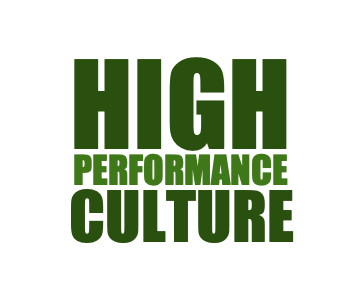Every year, millions of people try to improve their lives by setting personal growth goals. For most people this starts in January, but by February most of the goals are already forgotten. Sustaining momentum for improving yourself is tough. But just because it is tough, doesn’t mean you can give up on trying to grow and develop yourself.
One mistake that most people make when setting these growth goals is they fail to create highly actionable and focused growth goals. Their goals are closer to daydreams, and like most daydreams, nothing comes from them. But if you take the time to set high quality and actionable growth goals, then you are removing one more barrier from achieving your goals. Setting the right kind of growth goal translates the dream into a reality, and provides you the roadmap needed to reach your dream destination.
At this moment, I want you to pause. I want you to think about your own growth goals. Are they well-defined and something you regularly focus on? Do you help your colleagues and teammates shape and refine their growth goals? Do you day dream about your future, or do you do something to achieve it? If you just want to day dream your future, then you don’t have to read any further. But if you want to learn the 6 steps required for setting transformative growth goals, then read on.

3 Core Beliefs about Improving Yourself
Research also shows that not all goals are alike. For the sake of this article, we are going to be focusing on Growth Goals. These goals are all about how you are improve or develop new skills. How you achieve these goals will go a long way in determining your performance, both today and tomorrow. But before you even try to set your goals, it is important that you get in the right mindset.
That is why we have combed through the research and best practices to identify 3 core beliefs that will help you create high quality growth goals.
- Outcome Focused – Growth goals should focus on desired outcomes in terms of behaviors / performance, and not on actions (like attending a class or reading a book). Attending a class to improve your public speaking is a great step, but it is a wasted effort unless you actually improve your ability to present in front of a group. It is critical that you translate your goals into concrete outcomes that will be different once you build up the targeted skill
- Proactive Ownership – No one can force you to grow, and no one can grow for you. So if you don’t take responsibility for your growth, no one else will. You need to take charge of your growth. Too many people sit around waiting for their company or manager to provide them the perfect opportunity for growth. But there is no such thing as a perfect situation. Growth will always be a little messy and tough. So instead of waiting for others, you need to proactively explore, experiment, and take risks with your growth.
- Organizationally Aligned (when possible) – Building skills and capabilities requires focus, time, and effort. For that reason, it is smart to (when possible) align your growth goals to your organization’s needs. Having your boss support and invest in your growth will make your life a lot easier. But at the same time, there is nothing wrong with having deeply personal growth goals. Over the years I took pottery classes and learned how to speak Danish. I just had to do them 100% on my own time.

6 Steps to Setting Transformative Growth Goals
To me, having the right mindset is the majority of the battle. If you set your growth goals following the 3 core beliefs, then you are significantly more likely to succeed. But the mindset isn’t the only important thing when setting high quality growth goals. I can set a goal to go to the moon, and even map out all the requirements for my journey, but that goal isn’t achievable. In order for you to set growth goals that are valuable and achievable, we recommend you follow this 6 step process.
- Focus Area – Growth and development will require focus, effort, and time from yourself. For that reason it is critical to create a growth goal that is motivating and important to you. You aren’t going to put in the effort if you aren’t really committed. We recommend you answer the following “Focus Area” questions to help you narrow down what type of growth is critical to you at this moment:
- Is it more beneficial to focus my growth on how I can improve in my current role, or is it better to focus on preparing for the future?
- Is there some immediate need (i.e. feedback or strategic capability requirement) that requires my attention, or am I free to pursue some long-term passions / ambitions?
- Based on those answers, what growth goal should I set for myself?
- Desired Outcome – A lot of people fail in their growth goals because they set goals that are too vague. Things like, “I need to be a better manager” or “I want to become more innovative”. While these goals sound great, they are too fuzzy. Instead you need to accurately describe the desired outcome you want to achieve at the end of your goal. The following questions can help you refine your goals into “Desired Outcome” statements:
- What skills or abilities do you need to learn / improve?
- What outcome would you expect to see if you accomplish your growth goal?
- Can you describe the desired outcome in terms of concrete behaviors?
- Milestones – Once we have mapped out the desired outcomes you want to achieve with this goal, you can start mapping out the milestones you need to pass before you achieve your growth goal. These milestones will help you track your progression towards the goal, and ensure you keep heading in the right direction. You can create your milestones by answering the following questions:
- What are the first couple of milestones towards your desired outcome that will show your progression?
- Can you describe these milestones in terms of behavior and performance outcomes, not just actions (like attending a class or reading a book)?
- What would the desired timeline be for each of the milestones?
- Opportunities for Experience / Practice – The most effective way to build up a new skill is through practice. I like to say that we are all like toddlers… we have to touch the oven to realize it is hot. Unfortunately, most people try to address their growth needs by focusing on classes or books to read. They ignore that practice is actually what makes perfect. So before you start thinking about formal learning experiences, use the following questions to identify opportunities to practice your desired skills:
- What options are available in your current role that would help you grow/improve the targeted skill?
- Are there projects you could work on, or other areas in your company that can help practice your desired skills?
- Supporters – Similar to how practice makes perfect, getting support from other people will dramatically speed up your growth. For some, this will come in the form of a mentor or a coach who can guide you in your growth. For others it will come from a community or group of people who share a common growth focus area. It doesn’t even have to be some large or formal thing. Getting feedback from a colleague, friend, or family member will also work. You can identify your growth “Supporters” by answering the following questions:
- Who has expertise in your desired skill area, and could mentor you?
- Are there any learning groups or communities of practice that you can join?
- Do you have colleagues you can team up with and together you can help each other get better?
- Who can provide you feedback as you practice these new skills?
- Formal Learning – Obviously you can’t practice a new skill if you haven’t learned the fundamentals of that skill. So there should be a place for formal learning in your growth plan, but don’t treat it like a silver bullet. Formal learning is helpful in understanding some concepts, but it up to you to immediately start practicing those concepts.You can identify your “Formal Learning” opportunities by answering the following questions:
- What resources would support your growth goal?
- Are there books you can read, websites you can follow, communities you can join, or classes you can enroll in?
- What can you start tomorrow if you could?

Growth is Critical, but Don’t Forget Performance Goals
This article is all about how you can grow and develop yourself to reach new heights of performance. But growth goals aren’t the only type of goals you should be setting. You also need to be thinking about your responsibilities in your work and setting clear and stretching performance goals. At the same time, you need to make sure those goals are sustainable in the long term. Reaching some quarterly result only to burnout isn’t worth it. Your ambition should be sustainable high performance over a long period of time.
If you haven’t read my previous article on how to set Healthy Performance goals, then I suggest you do it. I also suggest you read my article on the 4 different types of growth goals. There is no doubt that you can reach new heights of performance if you harness the power of high quality performance and growth goals.
If you are interested in some tools designed to help you set growth Goals, go to my other website Healthy Performance Culture. When you join our HPC community you get access to our exclusive content and best practices I’ve found from over 20 years in Talent Development. Signing up is free, and once you’ve joined we will notify you anytime we have added something you might find interesting.
Cary Bailey–Findley has built High Performance Cultures within three Fortune 500 companies, and was awarded the ranking of #1 development organization in the world by the Association of Talent Development. He is currently the Talent Manager for SimCorp, but spends his free time helping startups scale up the the talent they need to succeed.




Add a Comment